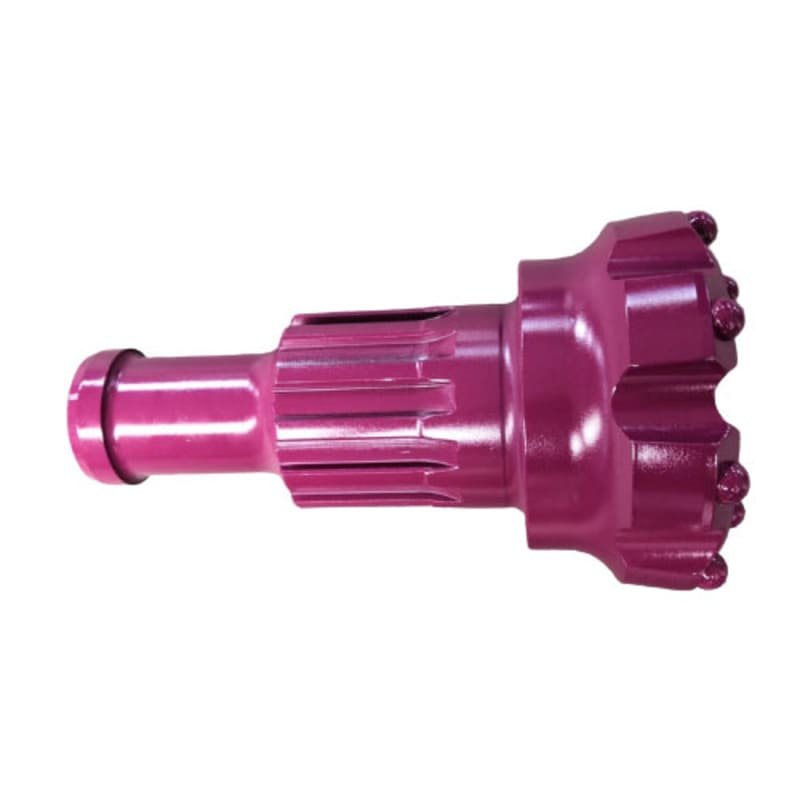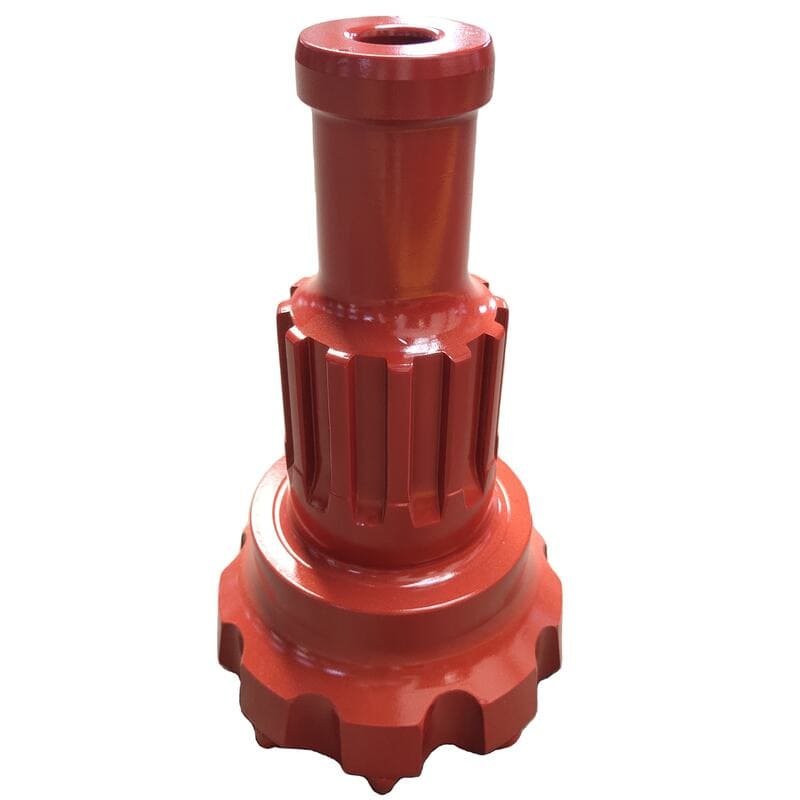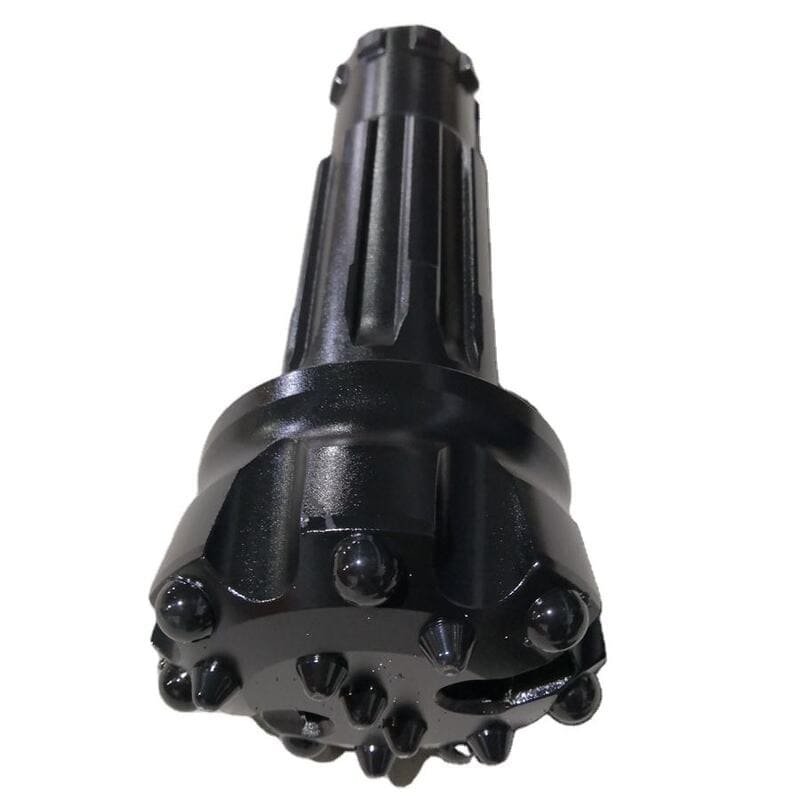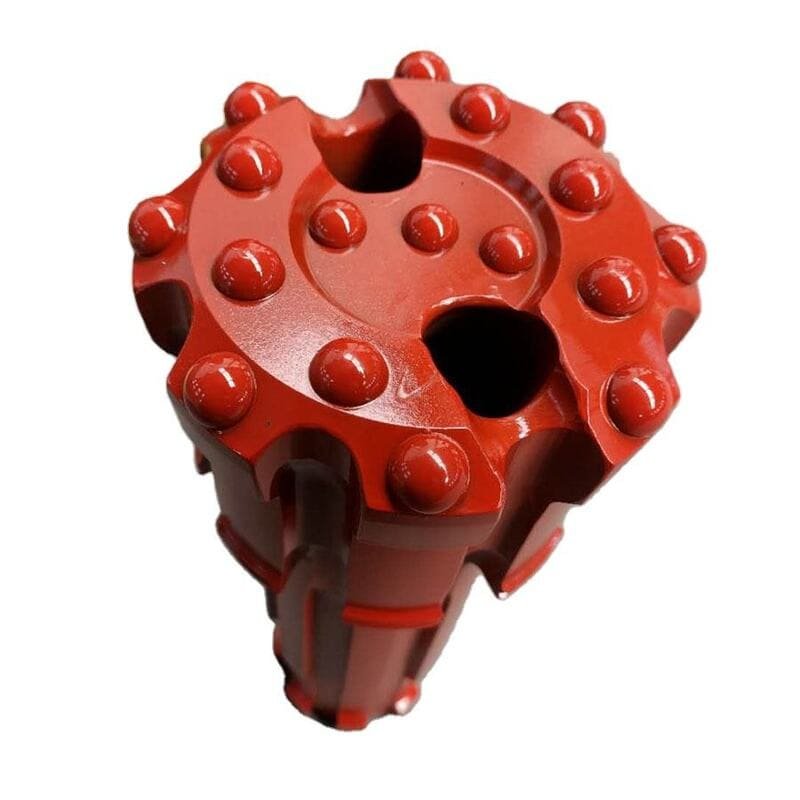Ever found yourself knee-deep in a mining project, longing for a tool that truly delivers?
I’ve come to appreciate DTH drill bits for their incredible penetration rates, unmatched efficiency in hard rock, low air consumption, and remarkable precision and durability. These features make them invaluable for mining, speeding up projects while slashing costs.
But there's more to these amazing tools. When I first started exploring DTH drill bits, I was astounded by their versatility and how they could be tailored to fit different geological conditions. It was like finding the missing piece to a puzzle! Whether dealing with blast hole drilling or exploration, these bits are real game-changers. Their resilience in tough environments has been a godsend, saving time and money on replacements. Let's dive into why they're such a crucial asset in the mining world.
DTH drill bits have high penetration rates in hard rock.True
DTH drill bits excel in hard rock, increasing productivity and speed.
DTH drilling consumes more air than other methods.False
DTH drilling uses less air, reducing costs and environmental impact.
How Do DTH Drill Bits Achieve High Penetration Rates?
Let's dive into the fascinating world of DTH drill bits and uncover how they tackle even the toughest rocks with ease!
DTH drill bits achieve high penetration rates by combining powerful impact energy, smart design, and adaptability to various rock conditions. This synergy allows them to efficiently break and remove material, boosting speed and productivity in drilling operations.

Impact Energy Delivery
Picture this: you're hiking in a dense forest, and every step takes effort as you navigate over rough terrain. Now imagine having a path cleared for you, making your journey smoother and faster. That's kind of like how DTH drill bits work their magic. The hammer is positioned right next to the bit, delivering powerful impact energy directly to the rock surface. This direct approach means less energy is lost along the way, similar to taking a direct flight versus one with several layovers. In my line of work, seeing these bits slice through hard rock with such efficiency is nothing short of mesmerizing.
The key to the high penetration rates of Down-the-Hole (DTH) drill bits lies in their ability to deliver concentrated impact energy directly to the rock surface. Unlike top hammer drilling, where energy is transferred down the drill string, DTH systems position the hammer closer to the bit. This design minimizes energy loss and maximizes drilling efficiency1, allowing the bit to break through hard rock with less effort.
Design Efficiency
I remember the first time I held a DTH drill bit; it felt like holding a masterpiece of engineering. These bits are crafted with precision, often using tough materials like tungsten carbide that can withstand abrasive environments. The strategically placed inserts are like the secret sauce, enhancing the bit's ability to fragment rock effectively. It's like having a tool that doesn’t just break but elegantly dismantles whatever stands in its way.
DTH drill bits are engineered for optimal performance in challenging conditions. The bits often feature advanced geometries and materials like tungsten carbide, which enhance their ability to cut through abrasive materials. The design includes strategically placed buttons or inserts that improve rock fragmentation and extend the bit's lifespan2. This engineering precision ensures that each blow contributes effectively to penetration, reducing downtime and maintenance.
Adaptability to Geological Conditions
One of the most remarkable features of DTH drill bits is their adaptability. It's akin to a chameleon changing its colors to blend into its surroundings. These bits can be customized to handle various geological conditions, from soft sedimentary layers to hard metamorphic rocks.
These bits can be tailored to specific geological conditions, making them versatile tools in diverse mining environments. By customizing bit configurations, operators can optimize for different rock hardness levels and abrasive qualities. This adaptability not only boosts penetration rates but also enhances overall productivity3 in various drilling scenarios.
Reduced Air Consumption
Operating with less air consumption is another feather in the cap for DTH systems. I often equate this to driving a hybrid car; you get where you need to go using less fuel, which is both cost-effective and eco-friendly.
DTH drilling systems are designed to operate with lower air consumption compared to other methods. This characteristic results in reduced energy costs and environmental impact while also maintaining high penetration rates. By using compressed air more efficiently, these systems support sustainable drilling practices without sacrificing performance.
Precision and Accuracy
For me, precision is paramount. Whether it's aligning a perfect shelf or drilling a straight hole, accuracy is key.
Achieving high penetration rates doesn't come at the cost of accuracy. DTH drill bits provide excellent precision crucial for creating straight holes with minimal deviation—something I strive for in all aspects of my work.
This accuracy is particularly important in applications requiring precise alignment such as blast hole drilling in mining operations.By maintaining a consistent trajectory,DTH bits ensure effective resource extraction4.
DTH drill bits have high penetration rates in soft rock.False
DTH drill bits excel in hard rock formations, not soft rock.
DTH drilling uses less air than other methods.True
DTH drilling requires lower air consumption, reducing costs.
Why is DTH Drilling So Effective in Hard Rock Formations?
Have you ever wondered why DTH drilling is the go-to choice for hard rock formations?
DTH drilling is efficient in hard rock formations due to its high penetration rates, precise hole alignment, low air consumption, and customizable drill bits. These factors collectively contribute to increased productivity and reduced operational costs.

High Penetration Rates
I still remember the first time I witnessed DTH drilling in action on a mining site; it was like watching a well-oiled machine seamlessly cut through what seemed like impenetrable rock. The secret sauce here is how the impact energy is delivered directly to the drill bit. It's almost as if the rock stands no chance, which means less downtime and more productivity. For anyone who's been on a tight project deadline, you'll know how crucial this is. This translates to faster project completion and enhanced productivity5.
Precision and Accuracy
Back when I was just starting out in this field, I learned the hard way that precision is everything. DTH drilling has revolutionized this aspect by ensuring straighter holes with minimal deviation. Imagine needing that perfect alignment for extracting resources efficiently—it's like threading a needle in a way that feels almost effortless. This precision minimizes wastage and optimizes resource extraction.
Low Air Consumption
Let me tell you, operating in remote areas comes with its own set of challenges. One thing I've appreciated about DTH drilling is its low air consumption. This isn't just a cost saver; it's a game changer for sustainability, especially when you're miles away from the nearest supply point. It offers a sustainable solution6 for mining operations aiming to minimize their carbon footprint.
Customization and Versatility
One size never fits all, right? That's where DTH drill bits shine with their customization options. I've been part of projects where tailoring the drill bits to specific geological conditions made all the difference. It's like having a Swiss army knife, ready to tackle any rock formation that comes your way. This customization enhances performance and ensures optimal drilling efficiency across various applications.
Durability and Longevity
Let's talk about longevity for a second. When you're out in the field, the last thing you want is equipment that can't stand up to the task. DTH drill bits, made from materials like tungsten carbide, are built to last. This durability means fewer replacements and less downtime, saving both time and money—resilience is crucial7. It's like having a trusty tool that you know won't let you down when you need it most.
DTH drilling uses more air than top hammer methods.False
DTH drilling requires lower air consumption, reducing costs and impact.
DTH drill bits are customizable for specific rock conditions.True
Customization enhances efficiency by adapting to unique geological features.
Why Is Low Air Consumption Important in Mining?
Imagine you're deep underground, where every bit of efficiency counts. Using less air in mining can be a game-changer, saving money, boosting safety, and protecting our planet.
Low air consumption in mining is vital for cutting costs, minimizing environmental impact, and boosting equipment reliability. By reducing air use, mining operations become more energy-efficient, safer, and sustainable, ensuring top-notch performance with less maintenance.

Cost Efficiency
I remember working on a project where every penny counted. In mining, low air consumption translates to lower energy costs, which can make a huge difference when balancing the books. I’ve seen how using less air during drilling directly reduces fuel expenses. This isn’t just about saving money—it’s about making smart, strategic choices that pay off in the long run, giving your project that competitive edge you need. This efficiency translates into significant financial savings over time, making low air consumption a strategic advantage8.
Environmental Impact
We all want to do our bit for the planet, right? Mining often gets a bad rap for its environmental footprint, but I’ve found that using less air can help change that narrative. By reducing emissions and energy waste, we’re not just complying with environmental regulations; we’re actively contributing to a greener future. It’s about showing stakeholders and regulators that we care about more than just profits. Using less air reduces emissions and energy waste, contributing to more sustainable practices.
Equipment Reliability
There was this one time when a colleague told me about how their equipment just kept breaking down. That’s when I realized how critical low air consumption is. It reduces wear and tear on compressors and machinery, meaning fewer breakdowns and less downtime. Reliable equipment is like gold in this business—it keeps projects on schedule and under budget, something we all strive for. Low air consumption can extend the lifespan of mining equipment by reducing wear and tear, leading to improved equipment reliability9.
Safety Considerations
I’ve spent a lot of time thinking about how to keep miners safe. Air quality is a big part of that puzzle. With lower air consumption, ventilation systems work better, reducing harmful dust and particles. It’s about creating a safer workplace where health risks are minimized. When safety standards are met or exceeded, everyone wins.
Air quality is a critical safety issue in mining environments.
Optimizing Performance
It’s amazing what precision can do. Efficient air usage allows for better control over drilling processes. I’ve seen it lead to straighter holes and more accurate penetration rates, especially in tough geological formations. This precision isn’t just technical jargon—it’s about getting the most out of every drill and ensuring project success.
Efficient air usage allows for precise control over drilling processes,
leading to optimized performance10 and project success.
DTH drilling has lower air consumption than top hammer.True
DTH drilling uses less air, reducing costs and environmental impact.
DTH drill bits cannot be customized for specific conditions.False
DTH drill bits can be tailored to fit unique geological conditions.
How Does Precision Impact Mining Operations with DTH Drilling?
Ever wondered how getting those drilling holes just right can transform mining operations?
Precision in DTH drilling leads to straighter and more accurate holes, which are essential for maximizing resource extraction and boosting operational efficiency. This minimizes deviations, saving both time and cost while enhancing productivity in mining processes.

The Importance of Precision in DTH Drilling
Imagine you're trying to hit a bullseye with a dart, but the dart veers off course—frustrating, right? That's what happens in mining if drill holes aren't precise. In Down-The-Hole (DTH) drilling, precision ensures every hole aligns perfectly with its intended path, much like hitting that bullseye. This is crucial because straighter holes optimize blasting, reduce waste, and enhance yield. I've seen firsthand how even slight deviations can lead to costly overlaps or insufficient fragmentation, driving up expenses unexpectedly.
Enhancing Productivity with Precision
In my experience, accuracy in drilling translates to fewer headaches and faster project completions. With DTH drilling, precision allows the bit to cut through rock like a hot knife through butter, boosting penetration rates. Those high penetration rates11 mean the drill moves through the rock swiftly, slashing downtime and ramping up productivity.
Cost Implications of Precision
Let's talk savings: precise DTH drilling can make a world of difference to the bottom line. By ensuring each drill hole is spot on, we cut down on air consumption and other operational costs. I remember a project where precision reduced energy waste and minimized equipment wear and tear, leading to significant maintenance savings.
Precision and Environmental Impact
There's a green side to precision too. When DTH drilling is accurate, it demands less air and energy, which translates to lower emissions and energy use. I've found this approach not only cuts costs but also aligns with sustainable practices—a win-win.
Technological Advances Supporting Precision
Thanks to recent tech innovations, the precision of DTH drilling equipment has leaped forward. Tools like real-time data monitoring and advanced customization options12 let us tweak drilling parameters on-the-fly to suit specific geological conditions. This tech-savvy approach ensures we're always at the top of our game, achieving optimal performance across varied mining environments.
DTH drilling has lower air consumption than top hammer.True
DTH drilling uses less air, reducing costs and environmental impact.
DTH drill bits cannot be customized for different rock types.False
DTH bits can be tailored to specific geological conditions.
Can DTH Drill Bits Be Customized for Specific Geological Conditions?
Have you ever wondered how some drilling projects seem to breeze through the toughest terrains? It all comes down to customizing the right tools.
Yes, DTH drill bits can be customized for specific geological conditions. By adjusting the design, materials, and size of the bit, they can be tailored to match the rock formations' hardness, abrasiveness, and composition. This customization boosts drilling efficiency and extends the lifespan of the tool.

Understanding the Need for Customization
The geological landscape is diverse, with each site presenting unique challenges for drilling operations. Standard DTH (Down-The-Hole) drill bits may not always be optimal for all conditions, leading to increased wear or reduced penetration rates. By customizing drill bits13, operators can align the bit's characteristics with specific geological features, such as varying rock hardness or abrasive qualities.
Key Customization Parameters
-
Bit Design Adjustments: Tailoring the shape and configuration of the drill bit can significantly impact its performance in different geological settings. For instance, altering the gauge design or face profile can enhance penetration rates and reduce bit wear in hard rock formations.
-
Material Selection: The choice of materials, like tungsten carbide or diamond, can be adjusted based on the rock's abrasiveness. A tungsten carbide14 insert may be preferred in scenarios where high impact resistance is required, whereas diamond might be chosen for its superior cutting ability in softer rocks.
-
Size and Diameter Modifications: Customizing the size of the DTH bit allows operators to match specific borehole requirements and geological conditions. For example, larger diameters may be necessary for soft rock to maintain structural integrity, whereas smaller bits can be used for precise control in hard rock.
Benefits of Customized DTH Drill Bits
- Enhanced Efficiency: By matching the drill bit to the geological conditions, operators can achieve faster penetration rates and reduced downtime due to bit wear or damage.
- Increased Longevity: Customization leads to less stress on the drill bits, extending their lifespan and reducing operational costs over time.
- Optimized Performance: Tailored bits improve performance across various applications, from blast hole drilling15 to geothermal wells, enhancing overall project outcomes.
Industry Applications and Case Studies
Industries such as mining and construction often require specialized drilling solutions. For instance, a mining company operating in regions with hard granite formations might opt for a DTH bit with a robust gauge design and high-grade inserts to withstand intensive use. In contrast, an operator dealing with softer sedimentary rocks may prioritize a different configuration to maintain speed and precision.
The ability to customize DTH drill bits16 plays a crucial role in meeting these varied demands, allowing companies to tackle unique geological challenges effectively.
DTH drill bits have high penetration rates in hard rock.True
DTH drill bits excel at drilling quickly through hard rock formations.
DTH drilling requires more air than other methods.False
DTH drilling uses less air, reducing operational costs and impact.
How Long Do DTH Drill Bits Last Compared to Other Methods?
Ever wonder why some drill bits seem to last forever while others burn out in no time? Let's dive into the world of DTH drill bits and see how they compare with other methods in terms of lifespan and efficiency.
DTH drill bits, thanks to their sturdy design and materials, often outlast other drilling methods. They're particularly cost-effective in hard rock formations, cutting down the need for frequent replacements compared to alternatives like top hammer drilling.

Understanding the Durability of DTH Drill Bits
I remember standing on a rocky terrain, the sun glaring down on us as we pushed through another long day of drilling. That's when I first realized the remarkable durability of Down-The-Hole (DTH) drill bits. These bits are like the unsung heroes in the drilling world, especially when dealing with those stubborn hard rock formations. Their secret? High-quality materials like tungsten carbide, which can take a beating and still keep going. The superior impact resistance17 of these materials means that even after countless hours of drilling, these bits remain effective, often outlasting other methods.
Comparing Lifespan Across Drilling Methods
I’ve tried my hand at different drilling techniques over the years, from top hammer to rotary drilling. Each has its quirks, but DTH stands out in terms of lifespan. Top hammer drilling can feel like trying to hammer a nail with a rubber mallet—vibrations travel up the drill string and wear out the bits faster. With DTH, it’s like having a laser-focused impact right where you need it, minimizing vibrations and enhancing precision. Rotary methods might get by in softer formations, but when it comes to the tough stuff, DTH systems18 are in their element.
Factors Influencing Drill Bit Lifespan
There’s more to drill bit lifespan than just the method. It’s like baking a cake—get the ingredients wrong, and you’ll end up with a flop. The type of rock is a big factor; abrasive rocks can eat away at your bits unless you’ve got the right setup. That’s where DTH bits really shine—they can be tailored to specific conditions, making them incredibly durable.
Operational practices also play a part. I learned early on that maintenance is key—regular check-ups, proper lubrication, and timely part replacements can extend the effective life19 of any drill bit significantly.
Cost-Effectiveness and Operational Impact
At first glance, DTH drill bits might seem pricier than other options. But it’s a bit like buying quality boots—they cost more upfront but last longer, saving you money in the long run. In industries where downtime costs an arm and a leg, investing in durable DTH bits pays off. You get fewer replacements and more uptime, which translates into substantial savings over time.
Knowing what affects bit lifespan is crucial for anyone trying to make smart decisions about drilling investments. By weighing lifespan against other factors like penetration rate and precision, I’ve found I can tailor my approach to meet specific project needs effectively.
DTH drill bits achieve high penetration in hard rock.True
DTH drill bits excel in hard rock formations, increasing productivity.
DTH drilling consumes more air than other methods.False
DTH drilling uses less air, reducing costs and environmental impact.
Conclusion
DTH drill bits offer high penetration rates, low air consumption, precision, and customization for mining operations, enhancing efficiency and durability in challenging geological conditions.
-
Explore how DTH technology optimizes drilling operations. ↩
-
Learn why tungsten carbide extends drill bit lifespan. ↩
-
Discover how customization enhances drilling productivity. ↩
-
Understand how precision aids efficient resource extraction. ↩
-
Explore how high penetration rates enhance productivity in tough terrains. ↩
-
Learn about the environmental and cost benefits of reduced air usage. ↩
-
Discover why tungsten carbide ensures long-lasting performance in drilling. ↩
-
Discover how low air consumption leads to significant cost savings. ↩
-
Learn how reduced air use improves equipment reliability. ↩
-
Explore how efficient air use optimizes mining performance. ↩
-
Learn how high penetration rates boost mining productivity. ↩
-
Explore how customization enhances drilling precision. ↩
-
Discover methods of customizing drill bits for various rock formations. ↩
-
Learn why tungsten carbide is favored for tough drilling tasks. ↩
-
Explore effective blast hole drilling methods with DTH bits. ↩
-
Read real-world examples of successful DTH bit customization. ↩
-
Learn why tungsten carbide ensures superior durability for drill bits. ↩
-
Explore how DTH systems reduce vibrations for enhanced bit longevity. ↩
-
Discover maintenance tips that maximize drill bit effectiveness. ↩








